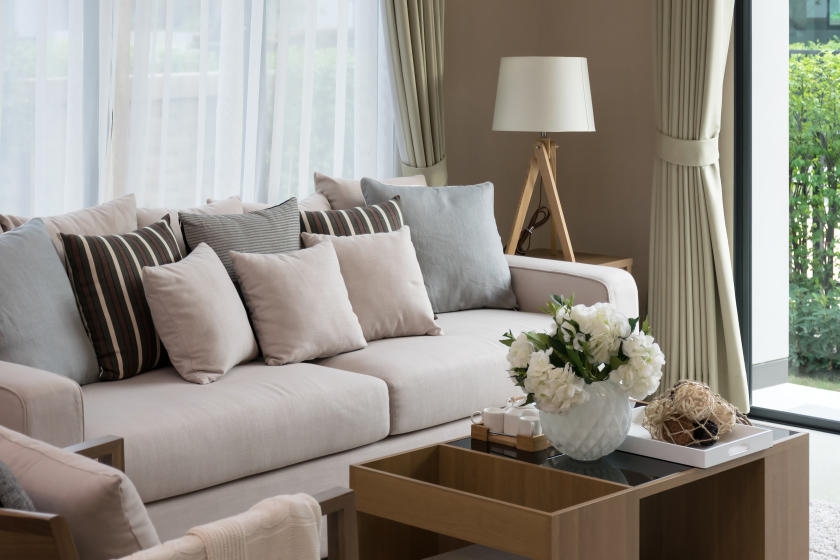High ceilings and sound-reflecting surfaces, such as glass, stone, tile and hardwood often can produce unwanted echoes in your home. If you find the reverberations distracting, you don’t have to break the bank to find ways to dampen your rooms’ lively acoustics. Here are some ways to reduce echo in your abode.
Cover the Floor
Carpets and rugs do more than provide soft padding for your feet. They also deaden sound reflection in a room by absorbing echoes and muffling noise. In rooms that have hardwood, tile or another type of hard-surface flooring, place area rugs that also complement your décor. Additionally, you can also add wall-to-wall carpeting. It is more “permanent” and expensive compared to rugs, but it will definitely reduce echo while providing full-room comfort.
Cover the Walls and Windows
Wall and window coverings reduce the amount of sound reflecting off window glass and hard wall surfaces. Heavy, lined window curtains and draperies that extend to the floor help muffle sound, reducing echo and ambient noise from inside the house and out. Canvas paintings, tapestries and decorative wall hangings also can absorb sound to reduce echo. Keep in mind that framed pictures and artwork enclosed behind glass will reflect sound much like windowpanes.
Fill Rooms with Furnishings
Rooms filled with plush furniture and accessories help cut down on echo. Couches and plump recliners, for example, absorb sound reflection. Fabric upholstery typically absorbs sound more effectively than vinyl or leather. Even items like bookshelves filled with books and decorative items can reduce echo. Essentially, the more objects there are in a room, the less sound will bounce around it.
Helpful Tips
Use soft accessories like decorative throw pillows or blankets to complement your furniture, add flavor to the room’s décor and reduce room echoes.
Because bathrooms and kitchens have many hard, reflective surfaces, such as tile, echo can be reduced by strategically hanging plush decorative items around the room, such as bath towels or tablecloths and fluffy dishtowels.
Install Acoustic Panels
While not practical for all applications and décor considerations, acoustic panels or “baffles” can be useful when echo is a problem. For example, in rooms with high ceilings. These wall-affixed panels, often made of foam or fabric and designed to absorb sound, are often used in professional audio settings such as recording or broadcast studios. There are residential versions; however, ideal for sound absorption in large open rooms or in home theater settings. Panels are fairly simple to install with adhesives, nails or pins. Keep in mind you may need a ladder or scaffold to safely install them on high ceilings. Generally, the panels should be installed every 12 inches for optimal echo reduction.
That’s it! Now you have some basic ideas on how to reduce unwanted echo and sound in your home.












